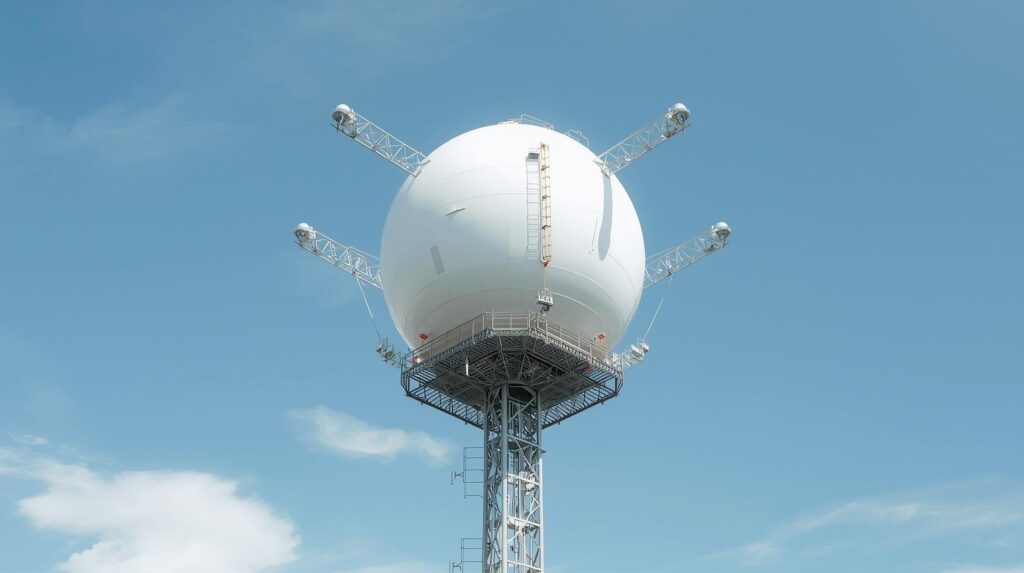The global aerostat systems market is entering a renewed phase of expansion as defense, homeland-security, and civil agencies increasingly prioritize persistent surveillance and long-duration intelligence capabilities. In 2025, the market is valued at approximately USD 9.4 billion and is expected to grow to nearly USD 16.8 billion by 2034, reflecting a CAGR of about 6.6 percent. This resurgence is driven by the unique ability of aerostats to remain aloft for weeks, deliver uninterrupted ISR coverage, and operate at a fraction of the cost associated with aircraft, satellites, and advanced UAV fleets.

Aerostat systems, which include tethered balloons, blimps, and airships, have transitioned from their earlier use as military early-warning platforms into multi-mission assets appropriate for both government and civilian use. Equipped with electro-optical, radar, communications, or specialized intelligence payloads, these airborne platforms offer a blend of altitude, endurance, affordability, and line-of-sight persistence that is difficult to replicate with other surveillance technologies. This combination has driven adoption for coastal monitoring, border security, telecommunications support, disaster management, public-event protection, and large-area situational awareness.
Download PDF Brochure @ https://www.marketsandmarkets.com/pdfdownloadNew.asp?id=193315635
The market’s momentum is closely tied to global defense modernization cycles. Governments are investing in large surveillance networks that rely on aerostats to strengthen land and maritime border security. Programs led by defense agencies emphasize the value of 24×7 monitoring from altitudes ranging from 1,000 to 15,000 feet, where aerostats can deliver a stable and continuous view of high-risk zones. These systems are particularly relevant in regions dealing with smuggling, infiltration, illegal fishing, and airspace monitoring requirements.
Commercial and civil users are beginning to adopt aerostats as well. Persistent telecommunication relay towers, airborne broadcast platforms, emergency-response systems, environmental research missions, and large-event awareness solutions are gradually expanding the market beyond defense. As payload miniaturization and data-processing capabilities improve, smaller aerostats are becoming viable for meteorological measurements, environmental monitoring, and research applications.
Technological evolution is also transforming market dynamics. Modern aerostats benefit from stronger and lighter envelope materials, improved helium retention, compact mooring systems, and autonomous launch and recovery controls. Sensor packages are becoming more capable through miniaturized EO/IR cameras, synthetic aperture radars, GMTI radars, electronic-intelligence suites, and high-throughput communication modules. Data links now provide real-time transmission of high-resolution imagery and radar feeds, enabling command centers to react instantly. Innovations in autonomous tether management, onboard AI analytics, and solar-assisted power solutions are extending endurance and reducing crew requirements. These enhancements allow aerostats to remain aloft for weeks rather than days.
Despite their growth, challenges remain. Aerostats are sensitive to severe weather, including strong winds, lightning, and storms. They require skilled personnel for deployment, handling, and maintenance. They lack the mobility of fixed-wing aircraft and UAVs and rely on ground infrastructure for mooring and support. However, new hybrid aerostats that combine lighter-than-air lift with modest propulsion are gradually mitigating these limitations and enabling repositionable intelligence missions.
Regional market expansion reflects diverse priorities. North America maintains the dominant share, led by long-standing U.S. programs supporting border security and cruise-missile surveillance. Canada continues to deploy aerostats for Arctic domain awareness. Europe is expanding its aerostat surveillance capabilities as part of broader NATO coordination and border-protection initiatives. Asia Pacific is the fastest-growing region, with India, China, Japan, and South Korea accelerating deployment for maritime domain awareness, radar surveillance, and telecommunications. The Middle East and Africa increasingly rely on aerostats to monitor desert borders, maritime traffic, and environmental hotspots. Latin America is adopting aerostats for counter-narcotics operations, disaster management, and urban-event security.
The competitive landscape within the aerostat systems market is defined by both established defense contractors and specialized lighter-than-air system developers. Companies such as TCOM, Raven Aerostar, Lockheed Martin, RT Aerostat Systems, Aeros, ILC Dover, and Drone Aviation Holding Corp lead innovation in envelope design, tether management, payload integration, and high-endurance platforms. National research agencies, including India’s DRDO and ISRO, are actively developing indigenous aerostat solutions, supported by government manufacturing incentives. Competition is shifting toward modular payload adaptability, multi-sensor integration, longer endurance, lower lifecycle costs, and improved survivability in adverse environments.
Sustainability considerations are becoming increasingly important. Aerostats naturally operate with low carbon intensity, relying on buoyant lift rather than continuous propulsion. New designs incorporate recyclable envelope materials, helium conservation systems, solar power integration, and long-endurance battery storage. These sustainability features align with global defense procurement directives, where low-emission and energy-efficient technologies are gaining priority.
Looking ahead, the aerostat systems market is expected to retain stable mid-single-digit growth as governments focus on persistent ISR, wide-area surveillance, and cost-efficient monitoring networks. Civil agencies will increasingly adopt aerostats for telecommunications, environmental research, and emergency communication support. Technological convergence involving AI, advanced materials, and hybrid propulsion will produce next-generation aerostats capable of broader mission sets and longer deployment cycles. With their ability to provide continuous coverage over strategic areas at relatively low operating costs, aerostats will remain indispensable to both defense planners and civilian security stakeholders throughout the coming decade.